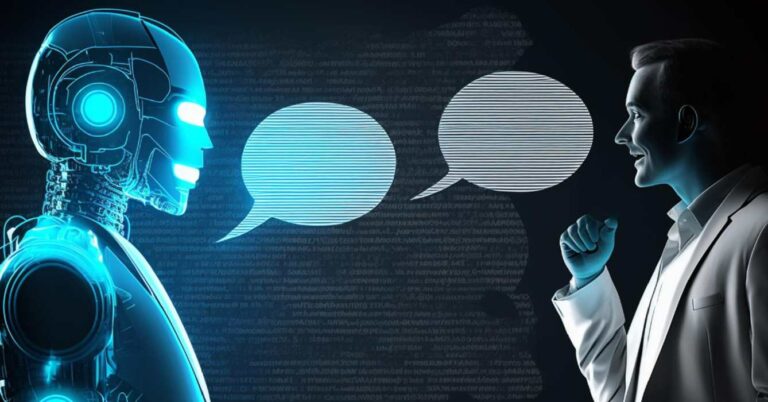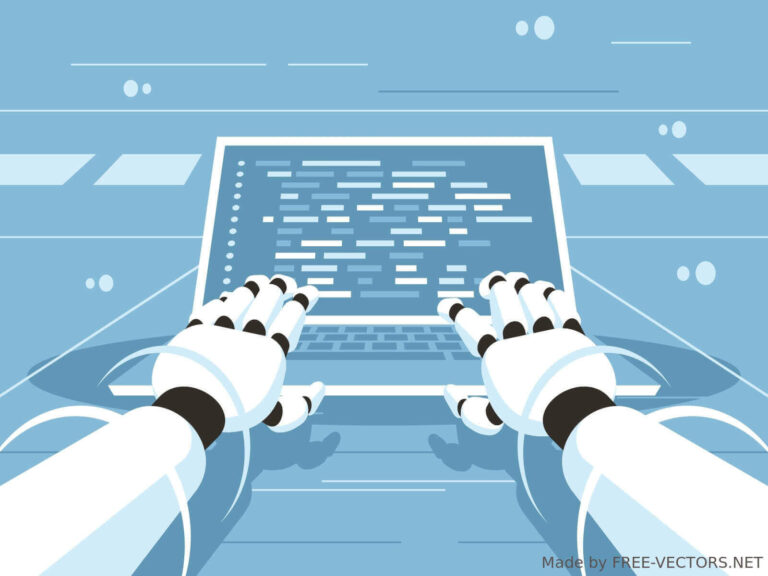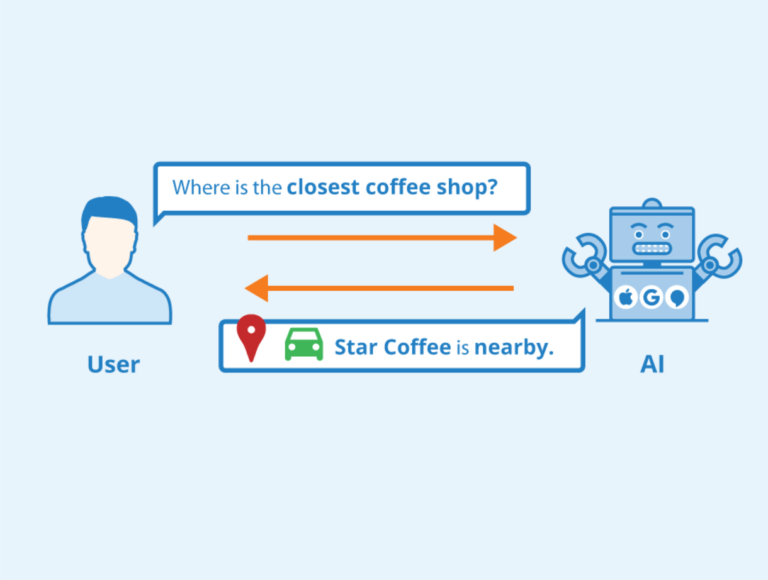Artificial Intelligence: Advantages, Disadvantages & The Future
Ever wondered what artificial intelligence is all about and how it relates to our lives? We look at this field and how it impacts our lives here.

Artificial Intelligence or AI is the use of algorithms to solve real-world problems. This involves the demonstration of intelligence by machines, and especially the computer.
The AI field has grown steadily since the 1950s, although the pace was slowed by computer hardware limitations. It has grown much faster in the last two decades, however, as a result of more powerful and cheaper computing platform. Still, some AI implementations remain relatively expensive.
You will find artificial intelligence in everything today from smartphone cameras to video games, e-commerce, healthcare, cybersecurity, product recommendations, search engines, and advertising.
This post takes a close look at the artificial intelligence industry and details its advantages and disadvantages, as well as what the future holds for us and the machines.
What is Artificial Intelligence?
Artificial intelligence is the demonstration of intelligence from a machine. This usually involves a good perception of the environment for more appropriate responses.
While different people may define artificial intelligence in their own words, an example might be a good way to better explain what AI is and what it is not.
Consider for a moment that you are designing a chatbot. It should be able to accept queries from users over the Internet, then parse those queries and provide an answer. Your initial course of action here will be to list the replies to all the possible questions a user might ask.
The problem with this approach, however, is that your bot will be severely limited in what it can respond to. For instance, when a playful user asks such a bot to “show me your tits”, the answer will probably be, “I don’t understand” or something similar.
Now consider a different chatbot with an algorithm that tries to figure out the meaning of words. It can still come with some pre-loaded basic answers, but its algorithm allows it to try and guess the meaning of words, and to attempt replying to unknown questions. Let us call it bot-2.
So, when you ask bot-2 to “show me your tits”, it figures that it does not have a pre-loaded answer for that, but its training lets it figure out a few things.
- The word “show” means that you desire an action from it.
- “Tits” is a synonym for human breasts.
With the above information, a very basic AI program might search the web for “tits” and display the first picture to you.
A more complex AI system might additionally classify “tits” as adult content. Let us call it bot-3. So, in addition to showing you the picture, it might also ask if you would like to join an adult chat room or even show you commercial adult ads.
As you can see from the above scenarios, bot-1 had zero environmental awareness. Bot-2 had 2 counts of environmental awareness and was better. While bot-3 had 3 counts and was the smartest.
In simple terms, capturing and analyzing more aspects of interactions (signals) makes an AI system smarter. There are many ways to go about this capturing and analysis of information to produce the best possible results. And this discipline is referred to as artificial intelligence.
What Are Some Artificial Intelligence Examples?
Following are some of the many AI implementations that you must have already come across:
- Virtual Assistants – Chatbots have evolved beyond the examples above to many useful applications. More of them even understand human speech and speak back. Examples include popular commercial products, such as Amazon’s Alexa, Apple’s Siri, and Google Assistant.
- Search Engine – Search engines, especially Google, have been the focus of lots of AI research and development in the last few decades. Today, the Google Search engine monitors and analyzes hundreds of signals for each term you search. That’s why it seems so smart.
- Deepfakes – Currently used more for fun, there are AI algorithms that can understand pictures and repaint them. For example, they can make a picture smile or speak, make a fake video of a president or celebrity, and even undress bikini-clad people in photos.
- Product recommendations – Used by all major corporations from Amazon to Netflix, ticket booking, and music recommendation platforms like Pandora.
- Facial recognition – This one has gotten so good that Facebook and Picasa can easily identify you, anywhere. AI images have gotten good due to improvements in neural network systems design.
- Spam Filtering – Gmail rocks because of its intelligent spam filtering system, amongst other great features. AI saved the world from the menace of email spam, thanks to the Bayes classifier approach to machine learning.
- Games – Used a lot for non-player character generation. Some games also learn from you, so they get better at beating you.
- Agriculture – Lots of approaches for better crop monitoring, improved yield, automatic milking of cows, optimal greenhouse conditions, and so on.
- Financial Speculation – Trading bots are all the rage these days, but their profitability can vary. Many of these bots employ AI, including Robo-advisors that give investment advice.
- Security – Artificial intelligence also finds use in security cameras, detecting unusual processes, and assisting humans in surveillance and defense of physical and cyber assets.
- Healthcare & Diagnosis – From care-giving robots to neural nets that diagnose scans faster, AI offers lots of opportunities for better and cheaper healthcare.
- Drones – These are flying machines that can think and navigate on their own. Currently a huge asset for military organizations.
- Industrial Robots – From welding parts together to picking products from the warehouse, building electronic circuitry, and spray-painting cars, industrial robots are growing in scope.
How Large is the Artificial Intelligence Field?
Artificial intelligence can be theoretically applied to any activity that human beings engage in. This includes everything from a perception of the environment to languages, learning in general, and motion. The field is vast.
Here is a list of the most popular AI fields. Note that some organizations will combine two or more of these fields to achieve their goals:
- Reasoning & Problem-Solving – Self-explanatory.
- Knowledge Representation – Ability to answer questions correctly.
- Planning & Predictions – Making sense from piles of data.
- Learning – Discovering new patterns through experience.
- Natural Language Processing – Making sense of human communication.
- Perception – Understanding data from sensors e.g microphones, cameras, radars.
- Motion – Ability to navigate the environment, such as robotics and self-driving cars.
- Social Intelligence – Interacting with people.
- General Intelligence – Self-explanatory.
Top Artificial Intelligence Approaches
While there are different areas of pursuit for artificial intelligence, there are equally different computing approaches to the problem of generating intelligence out of machines.
The different methods below have evolved over the years and some are better than others for certain tasks. This makes it important to know what they are and how they work.
- Logical Methods – Though not specifically AI-related, logical methods and algorithms can help a lot in developing smart applications. The modern computer is based on logical circuits like AND, NOT, NAND, OR, XOR, and so on.
- Search & Rank – As the name implies, you search a database and rank the results based on relevance. This is the foundation of search engines.
- Neural Networks – Recreating the human brain’s cognition system. A neural net can be memory intensive, depending on its level of complexity, or how many hidden layers it has. Complex neural nets with many layers is called deep learning. They are very flexible in learning and are behind most of the recent marvels of AI applications.
- Decision Tree – A straightforward method of classifying information or events based on inputs. Each tree level helps to decide what an object might, or might not be.
- Bayes Classifiers – This method classifies documents based on their content. It is great for email spam control, as emails that contain “Viagra” or “buy Cialis online” are easy to detect as spam.
- Evolutionary – An AI system that can create different versions of itself, test them out, and then become the best version. Great for games and maybe a super-intelligence project.
- Clustering – This involves grouping related data together to make finding connections like flights and ride-hailing opportunities easier.
The Advantages of Artificial Intelligence
Artificial intelligence comes with many potential advantages that make it attractive for a wide range of applications from healthcare to commerce, manufacturing, and so on. The scope is practically endless though, as most human activities can benefit from AI.
Following is a list of some of the major benefits of artificial intelligence:
- Automation – They make it easy to automate tasks, especially the routine and boring ones.
- No Human Errors – Humans will make mistakes from time to time, but not computer applications.
- Faster Decisions – You can get answers in just milliseconds, without any stress.
- Ready 24/7 – Computer applications never tire.
- Little To No Risks – In times of war or a nuclear outbreak, robots can be very useful.
- Productivity Boost – Computers already boost our productivity, and AI will keep increasing it.
The Disadvantages of Artificial Intelligence
Artificial intelligence also has some disadvantages and here are the major ones:
- Unemployment – Artificial intelligence applications are set to displace jobs in the future. However, these will likely be repetitive tasks that do not require complex skills.
- Capital Intensive – Implementation of new AI systems is still a relatively capital-intensive undertaking, compared to simply hiring someone to do the job.
- No Outside The Box Thinking – Although artificial intelligence can help scientists come up with new inventions or to discover new patterns, it only works when the system is designed to do that. Else, an AI machine lacks human-style creativity. At least, for now.
- Privacy Issues – From Facebook to countries that already employ AI to search the faces of the people on the streets. No one knows how a malignant application of this technology might turn out.
Our Future with Artificial Intelligence
The future hasn’t happened yet, so many outcomes are still possible. However, you can expect a few things from the field of AI, based on ongoing work and research. Here are some:
- Military – The first is weaponized AI, military labs around the world are already deep into this. And remember that the Internet was originally developed for military use.
- Jobs – A second issue is traditional jobs. There will be increasing replacement of human menial- and routine-job workers by robots or other AI-powered solutions. Jobs involving more complex skills and creativity should not be much affected though.
- Intelligence – Another issue is super-intelligence, which refers to an AI application that gets so intelligent, that it surpasses normal human levels. This is not a matter of if but of when, as it is bound to happen given enough advancement in computer hardware development. So, expect some kind of Skynet, the Matrix, or VIKI from iRobot in the future.
- Privacy – Surveillance will get worse and bad actors will eventually join the party. What better way to find someone to kidnap than with an AI-powered public surveillance system?
- Love – Finally, there is the issue of sex and relationships. Life-sized sex dolls with basic AI are already the rage with some folks. You can get them in any shape, color, face, and with extras that you like. But with AI advancements, they will walk around, do the dishes, dance for you, ask how your day was, bond emotionally, learn your sexual and other preferences, and all the while, getting cheaper.
See where all this is headed?
Top AI Tools
Hackernoon has this long list of AI tools and services you can start using today. From Amazon Echo to Google Assistant, Cortana, and many more, the list is divided into relevant sections.
For more technical tools to develop personal or business AI systems, the list below showcases some of the top names in the industry and what they do.
- Python – High-level programming language with lots of AI libraries.
- TensorFlow – Python-based AI development platform from Google.
- Scikit Learn – Another Python-based machine learning platform.
- Caffe – Fast and easy-to-use machine learning framework.
- MXNet – An open-source deep learning framework.
- PyTorch – An optimized deep-learning Python library.
- Google Cloud ML Engine – Scalable cloud-based engine for training & predictions.
- Azure ML Engine – Cloud-based machine learning engine from Microsoft.
Conclusion
Reaching the end of this guide through the world of artificial intelligence and what it has in store for us, you have also seen the advantages and disadvantages of this technology.
One thing is clear – the continued development of artificial intelligence is inevitable. So we must brace ourselves for dramatic socioeconomic changes in the coming decades.





